When Do Bluebirds Nest And Lay Eggs?
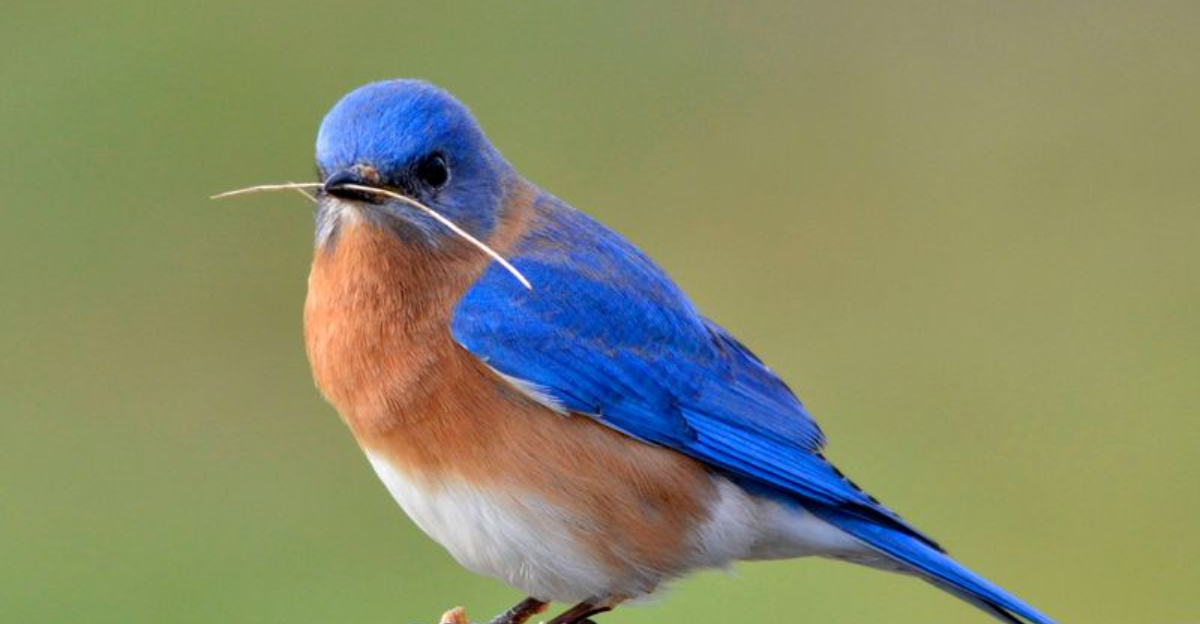
Bluebirds are fascinating creatures that capture the hearts of many bird enthusiasts. Known for their vibrant plumage and sweet songs, these charming birds play a vital role in the ecosystem.
Today, we’ll unfold some intriguing facts about bluebirds, along with insights into their nesting and egg-laying habits.
1. The Vibrant Plumage Of Bluebirds
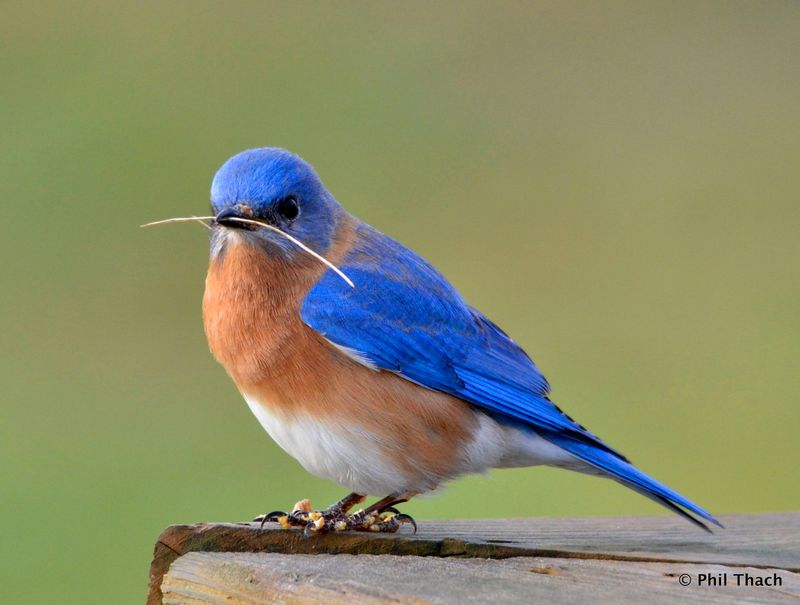
Bluebirds are not just any birds; they are nature’s little jewels with vibrant blue and orange plumage that can take anyone’s breath away.
These colors aren’t just for show; they serve a purpose in attracting mates and deterring rivals. Imagine a bluebird’s feathers as a dazzling cloak, shimmering in the sunlight, a display of beauty and evolutionary prowess.
Each bluebird’s plumage is like a fingerprint, unique and telling a story of its own. One could say, they’re dressed to impress all year round, without needing a wardrobe change!
While other birds may struggle with fashion faux pas, bluebirds flaunt their hues effortlessly. This vivid coloration is due to microscopic structures that scatter light, creating their signature blue.
It’s a fascinating thing about nature: the more you zoom in, the more magical it gets! And let’s not forget, the bluebird’s wardrobe is also practical. It helps them blend into their natural habitat, keeping predators at bay.
Next time you spot one, think of it as nature’s fashionista, strutting down the runway of the wild. With such splendid attire, it’s no surprise that bluebirds are a favorite subject for birdwatchers and photographers alike.
2. The Sweet Serenade Of Bluebirds
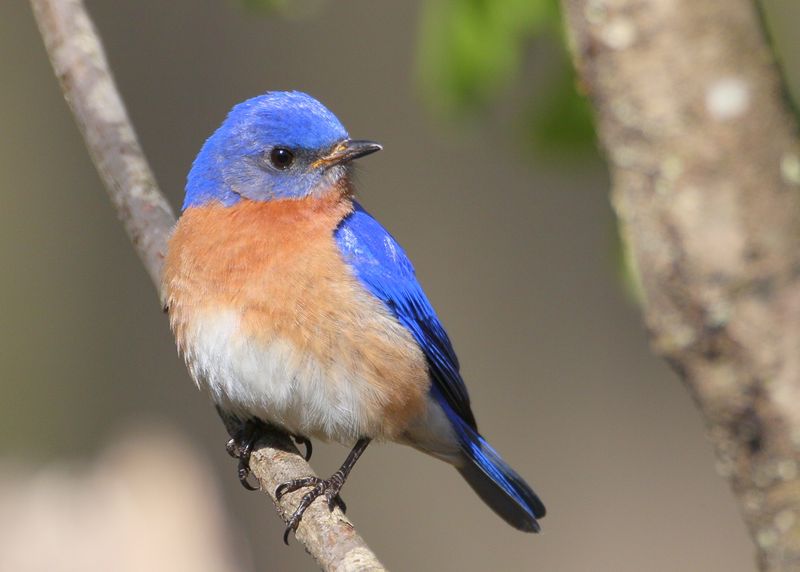
Bluebirds are the nightingales of the day, their sweet serenades filling the air with joy and tranquility. These vocal virtuosos have a repertoire that could make any musician envious.
Their songs are not just for entertainment; they serve as communication tools, marking territory and attracting mates. It’s like a concert in the wild, with each note perfectly pitched to convey messages only other bluebirds truly understand.
One might say bluebirds have their own Spotify playlist, curated by nature itself. Listening to a bluebird’s song is like sipping a fine wine – it soothes the soul and leaves you craving more.
Imagine waking up to their melodious tunes, a natural alarm clock that actually makes you smile. Bluebirds sing with such passion and fervor, it’s as if they’re serenading the entire world.
In many cultures, the bluebird’s song symbolizes happiness and prosperity. It’s no wonder people love having these birds around!
Their musical talents are not just for show; they’re essential for survival in the wild. A bluebird’s song is an expression of its personality, a testament to its resilience and charm. So next time you hear their cheerful melody, take a moment to appreciate the magic they’re weaving into the air.
3. The Bluebird’s Nesting Rituals
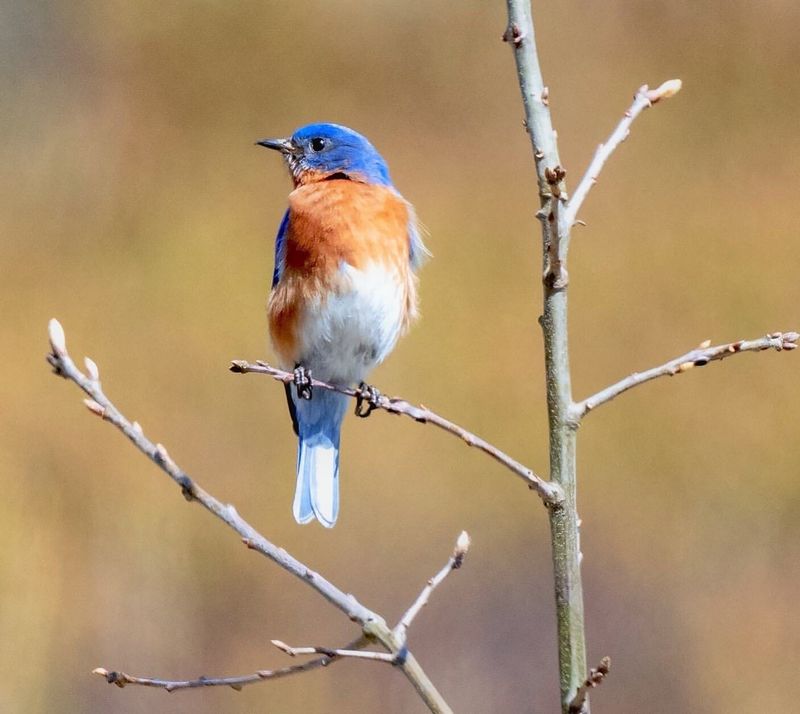
When it comes to nesting, bluebirds are the architects of the avian world, crafting homes that are both functional and charming.
Nest-building is a team effort, with both male and female bluebirds chipping in to create the perfect abode for their future chicks. They often choose tree cavities or man-made birdhouses, transforming them into cozy nests lined with grass and feathers.
One might say bluebirds have a keen eye for real estate, picking locations that offer safety and comfort. Watching them build a nest is like witnessing a tiny home improvement show, complete with all the drama and triumphs of finding the perfect fit. These birds are meticulous in their construction, ensuring every twig is in its rightful place.
Bluebirds are punctual homeowners, often starting their nesting process as early as March. They can raise multiple broods in a single season, reflecting their dedication and hard work.
Their nesting rituals are a reminder of the beauty of cooperation and the instinctual drive to nurture and protect their young. In a world where many species struggle, the bluebird’s successful nesting habits are a testament to their adaptability and resilience.
4. Egg-Laying And Incubation
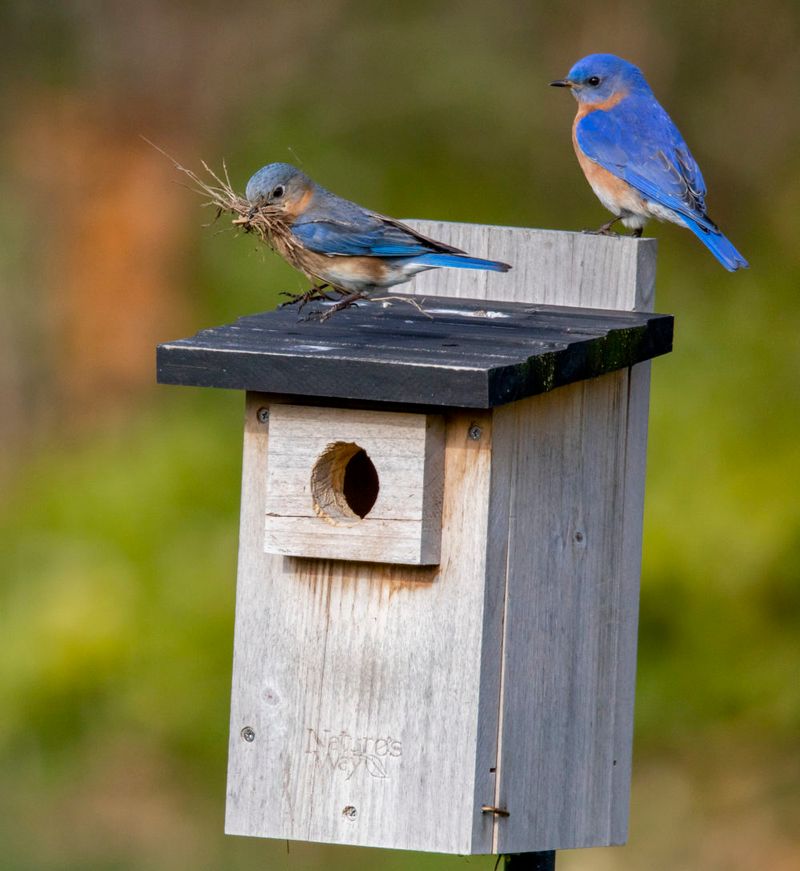
Bluebirds have a knack for timing, especially when it comes to laying eggs. The female bluebird, after selecting the perfect nest, lays a clutch of beautiful, speckled eggs. This usually occurs in early spring, coinciding with warmer weather and the abundance of food resources.
The incubation period is a time of anticipation and careful guardianship. The mother bluebird diligently incubates her eggs, ensuring they stay warm and safe.
It’s a period where patience is key, as the world outside continues its bustling pace. One could liken it to a mother-to-be waiting for the arrival of her baby’s first cry.
During this time, the male bluebird plays the supportive partner, often bringing food and standing guard. It’s a dynamic duo effort, showcasing the strength of partnership in nature. The eggs hatch after about two weeks, unveiling tiny, featherless chicks.
This is just the beginning of their adventure in the vast world, under the watchful eyes of their devoted parents. The egg-laying and incubation period is a testament to the bluebirds’ commitment to their offspring and their innate understanding of the cycles of nature.
5. Bluebirds And Their Chicks
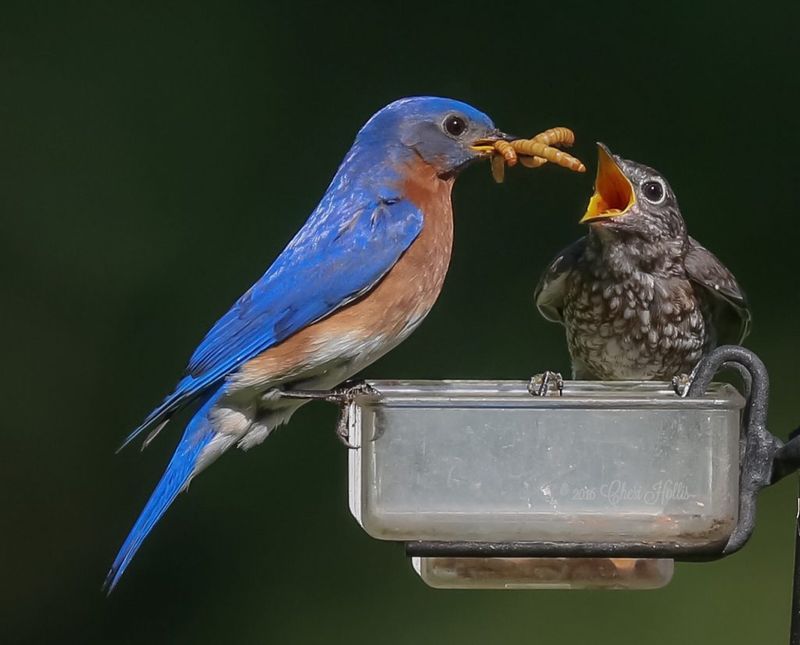
Once the bluebird chicks hatch, the real fun begins! These tiny, featherless wonders are entirely dependent on their parents for survival. The adults work tirelessly, bringing a steady stream of insects and berries to feed the ever-hungry mouths. It’s a full-time job, requiring teamwork and dedication.
The sight of bluebird parents feeding their chicks is nothing short of heartwarming. It’s a round-the-clock effort, as the chicks demand constant attention and nourishment. These feeding sessions provide a glimpse into the nurturing side of bluebirds, emphasizing the importance of family bonds and shared responsibilities.
As the chicks grow, their downy feathers give way to the vibrant plumage characteristic of bluebirds. They begin to explore their nest environment, gradually gaining strength and confidence. This stage is critical, as they prepare for their first flight, a momentous occasion in their young lives.
The journey from hatchling to fledgling is a remarkable transformation, one that’s filled with challenges and triumphs. Observing bluebird parents nurturing their chicks is a reminder of the beauty and complexity of life, a testament to the instinctual drive to care and nurture within the animal kingdom.
6. Migration Patterns Of Bluebirds
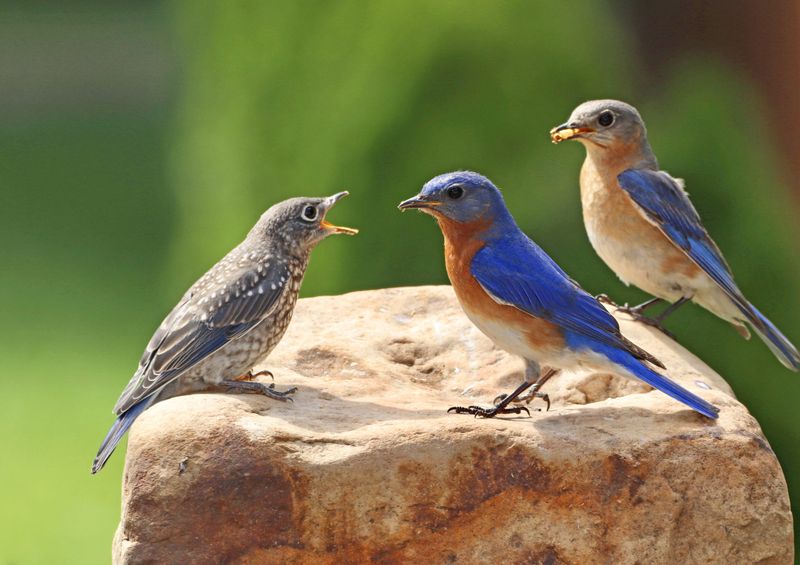
Bluebirds are seasoned travelers, embarking on migratory journeys that can span thousands of miles. These migrations are not just about escaping the cold; they’re about survival and finding the best resources for sustenance. It’s as if bluebirds have an internal GPS guiding them to their seasonal destinations.
Unlike some birds that migrate in large flocks, bluebirds often travel in smaller family groups, showcasing strong familial bonds even in transit. Their migration routes often lead them from northern breeding grounds to southern winter habitats, where food is more plentiful during the colder months.
This epic journey is fraught with challenges, from unpredictable weather to the threat of predators. But bluebirds are resilient, adapting their routes and behaviors to ensure they reach their destinations safely.
The migration of bluebirds is a testament to their tenacity and adaptability, traits that have allowed them to thrive across diverse environments. Watching them navigate the skies is nothing short of awe-inspiring, a reminder of the incredible feats of endurance and instinct that define the avian world.
7. Conservation Efforts For Bluebirds
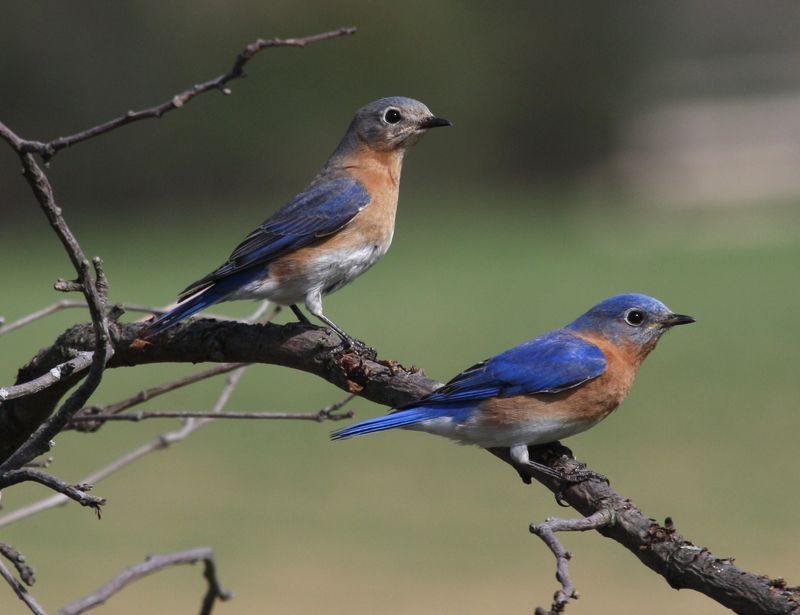
Conservationists have a soft spot for bluebirds, and it’s easy to see why. These charming birds have faced numerous threats over the years, from habitat loss to competition with invasive species. Thankfully, dedicated efforts have been made to ensure their populations remain vibrant and healthy.
One of the most successful conservation strategies has been the establishment of bluebird trails, where volunteers set up and monitor nest boxes in suitable habitats.
These artificial nesting sites provide safe havens for bluebirds, helping to boost their numbers and encourage breeding. It’s a collaborative effort, with communities coming together to support these delightful birds.
Education plays a vital role in conserving bluebirds as well. By raising awareness about their importance in ecosystems, people are more likely to take action to protect them. This includes planting native plants, reducing pesticide use, and participating in monitoring programs.
Bluebird conservation is a testament to what can be achieved when people unite for a common cause. It’s heartening to see how these efforts have positively impacted bluebird populations, ensuring that these beautiful birds continue to grace our skies for generations to come.






